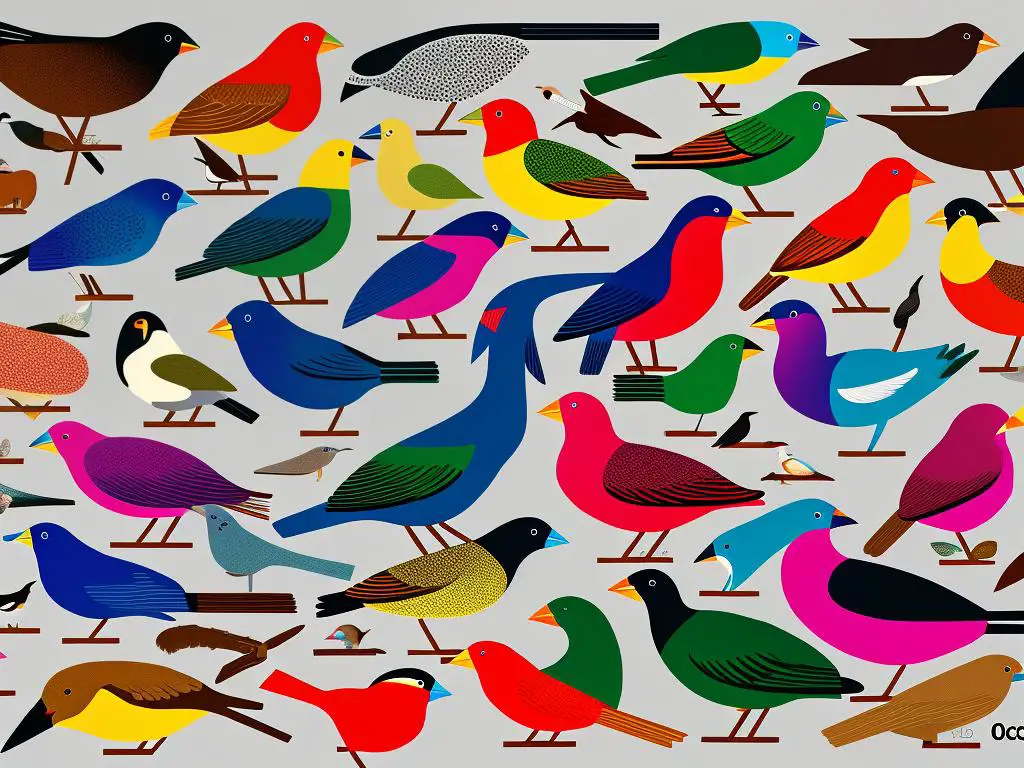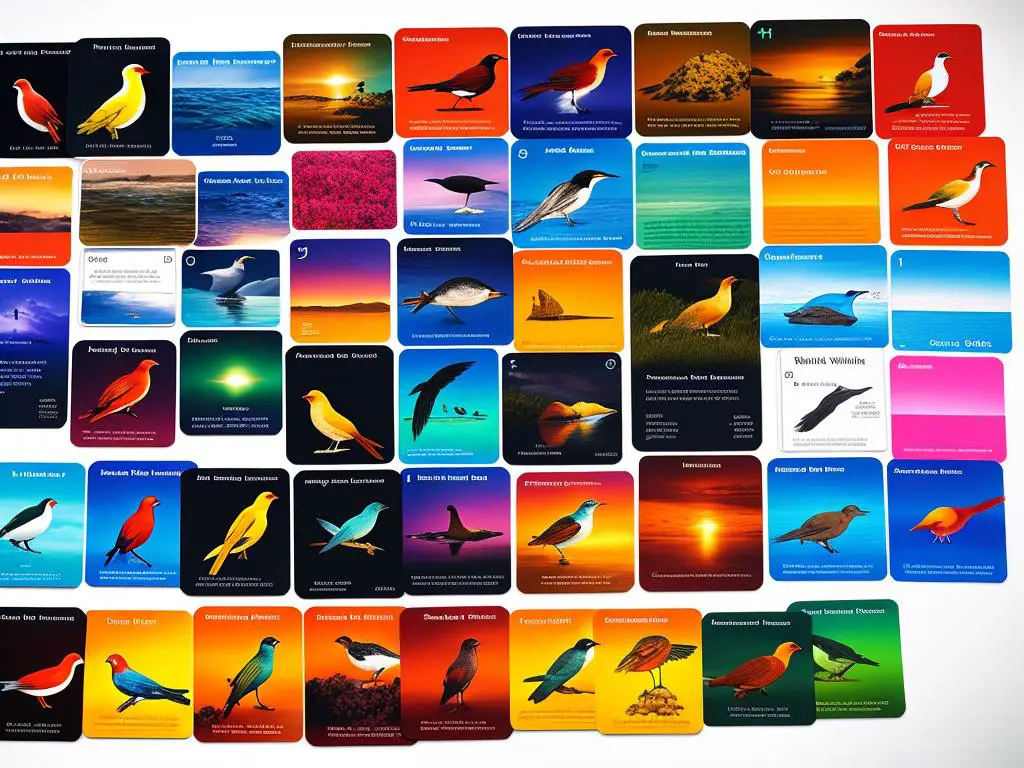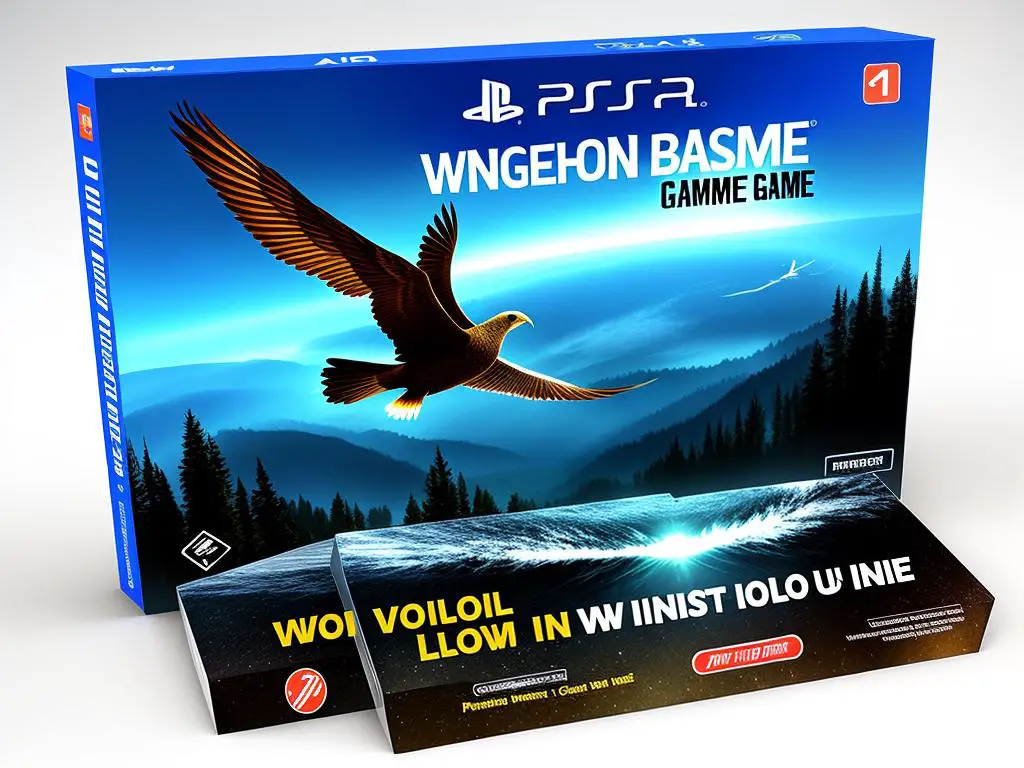Embarking on a journey exploring the vibrant and diverse avian world of Wingspan calls for a deep understanding of the base game and its oceanic expansion. The Wingspan game, with its beautifully illustrated bird cards, intricate rules, and intricate strategies, forms the bedrock of our discussion as we delve into the verdant ecosystems teeming with bird life. Anchoring our knowledge in the base game, we shall spread our wings and soar into the fascinating add-ons introduced in the thrilling Oceanic expansion. Skimming over new bird species, food types, and bonus cards, we plunge into the crux of game-changing strategies applicable to this expansion pack. Our adventure does not stop at understanding; we aim to cultivate an insightful strategy perspective that would navigate any enthusiast to a victorious end in the game of Wingspan.
Understanding the Wingspan Base Game
Understanding the Wingspan Base Game: The Foundation
Wingspan is an engaging, competitive, and card-driven board game designed by Elizabeth Hargrave. Touted for its strategic gameplay and stunning artwork, this game is set amidst the tranquil charm of the avian world, where players strive to discover and attract various birds to their wildlife preserves.
Incorporated in the game are over 170 unique bird cards, 26 bonus cards, 16 Automa cards, 103 food tokens, 75 egg miniatures, 5 custom wooden dice, 5 player mats, 1 birdfeeder dice tower, 2-piece Game Trayz custom tray, 1 goal mat, 8 goal tiles, and 1 first-player token.
The primary objective of Wingspan is to build the best aviary and attract a variety of birds to it. Players achieve this by gathering food, laying eggs, and drawing bird cards that can be played in specific habitats: forest, grassland, or wetland. Each bird in a player’s aviary contributes to progressing in one of these three habitats, providing powerful combinations to propel the gameplay.
Participants gain points from numerous avenues such as the sum of bird points, bonus cards, end-of-round goals, eggs, cached food, and tucked birds. Once all four rounds are complete, the player with the most points is declared the winner. It’s crucial to maintain a strategic balance between the immediate benefits of taking an action and the long-term advantages of playing a bird.
The Wingspan base game is not just about understanding rules but also mastering strategies. Players need to plan wisely and optimize their turns, adapt to the available birds, manage resources wisely, and seize opportunities when they present themselves to maximize points.
An In-depth Dive into Wingspan’s Oceanic Expansion
The Wingspan Oceanic expansion arguably strengthens the original game by emphasizing the unique avian biodiversity of Oceania. This addition introduces fresh approaches and exciting components, undoubtedly enhancing the overall gameplay.
One exceptional addition in the Oceanic expansion is the inclusion of a new set of bird cards. These cards feature unique bird species from Australia and New Zealand, giving rise to new bonus cards and end-of-round goals. These additions enable players to explore a wider variety of strategies throughout the gameplay.
In addition, this expansion also rolls out a new food resource – the nectar. This dynamic food source can replace any other type and offers intriguing choices for resource management. But given its transient nature, if any remaining nectar isn’t used by the round’s end, it dissipates, adding an extra layer of complexity.
Furthermore, the game introduces new player mats in the Oceanic expansion, replacing the base mats. These new mats encourage player interaction and offer novel ways to gain points, including platforms to briefly boost bird abilities in a particular habitat.
While the Oceanic expansion undoubtedly introduces complexity to Wingspan’s core game, it simultaneously enhances the gameplay depth, adding richness. A solid comprehension of the fundamental game, coupled with strategic understanding of the Oceanic expansion’s elements, can provide players with an unparalleled gameplay experience full of strategic decisions and striking biodiversity.

In-Depth Overview of the Oceanic Expansion
Wingspan’s Oceanic Expansion: The Joy of Discovering New Avian Adventures
The Wingspan Oceanic Expansion invites both bird-enthusiasts and board game aficionados into an exciting journey of avian adventures. This expansion provides a wealth of new bird cards representing an entire new continent. Coupled with new food resources, additional bonus cards, and intricate new rules, the game offers all players a unique, immersive adventure, regardless of whether they are novices or seasoned gamers.
A New aviary: Bird Cards Overview
The key attraction of Wingspan’s Oceanic Expansion is undoubtedly the fresh set of 95 bird cards. The bird species represented in these cards closely mirror the rich birdlife in Australia and New Zealand. This expansion includes every category of bird from these regions – from tiny Fairywrens to imposing Albatrosses. Each bird card possesses unique abilities that were carefully researched to match each bird’s behavior in the wild. For instance, Albatross can traverse vast oceans, therefore, in-game, they traverse over several habitats for feeding.
Novel Food and Mechanisms: Fishing and Nectar
Diversification is the name of the game when it comes to the food sources in the Oceanic Expansion. Alongside seeds, fruits, rodents, and invertebrates, now players can fish and collect nectar. Nectar works as a wildcard food and plays a significant role in end-of-round goals. Furthermore, it also introduces an interesting mechanism where leftover nectar at the end of each round converts into points.
Amplified Competition: Bonus Cards
Twelve new end-of-round goal tiles and five new bonus cards spice up the gameplay. The goal tiles correspond to the nectar and fishing game mechanisms, presenting unique challenges. The bonus cards reward players for a variety of plays, such as having birds with the same wing color or collecting specific bird types, increasing tactical depth and promoting strategic gameplay.
Tactical Changes: New Rules
The new rules in the Oceanic Expansion revolve around bird play, food resources, and habitat formation. The fresh gameplay mechanisms offer players more strategic choices, fostering a more immersive, engaging game. The structural changes place a significant emphasis on managing the bird’s natural habitat and understanding each bird’s unique abilities, creating an intriguing twist on an already beloved game.
If you seek a thrilling gaming experience that pushes the boundaries of the base game, look no further than the Wingspan Oceanic Expansion. This marvelous update carries forward a deep appreciation for bird behavior and natural habitats while simultaneously introducing new layers of complexity, strategy, and engagement. The secret to mastering this expansion lies in both a deep understanding of its unique features and rules and a passion for all things avian.

Key Strategies for the Oceanic Expansion
Taking Flight: Navigating Through Wingspan’s Oceanic Expansion
This exciting expansion introduces players to the rich avifauna of Oceania through added bird cards, bonus cards, and end-of-round goals. To win, you need to get comfortable with the new abilities and characteristics of these bird cards. At the same time, cleverly taking advantage of the fresh scoring opportunities presented by these other additional attributes and bonuses is equally crucial.
Adapting Existing Strategies: Making Waves with Old Tactics
The initial strategies that prove successful in the base Wingspan game can still be effective in the Oceanic expansion. Focusing on bird productivity, accumulating eggs and catering specifically to end-of-round goals are all core strategies that can play pivotal roles in the Oceanic expansion. It’s important to successfully adapt these strategies to capitalize on new features the expansion offers. For instance, learn to leverage the new food type: nectar. Nectar—which can be utilized as a wild resource—provides a new layer of strategic decisions and can significantly impact bird productivity if used wisely.
New Strategies: Catching the Oceanic Current
While the Oceanic expansion accommodates many existing Wingspan strategies, it also introduces fresh approaches to strategic play. It’s important to exploit the new yellow powers, which provide exciting strategic subtleties by having enduring effects for the rest of the game. Several birds with these powers have high point values and potent ongoing effects, making them primary targets to consider adding to your avian tableau.
Added to this, the end of round reset for nectar use adds a new level of resource management. A player can adopt a strategy that involves accumulating and spending nectar, bearing in mind that any unspent nectar at the end of each round is lost.
Leveraging Bonus Cards: Rising Above the Tide
The Oceanic expansion includes new bonus cards that provide additional scoring opportunities. Successfully leveraging these cards can significantly tip the game in your favor. For instance, one might prioritize birds with “bowl” nest types or target bird cards with high feather counts. Adapting to and capitalizing on the new bonuses is absolutely essential in this expansion.
Effective Usage of Oceania Birds: Flight of the Kiwi
Oceania bird cards have distinct attributes which, when used effectively, can greatly influence your game’s outcome. Some of these birds contain powers that generate more resources- like food and eggs- when activated. These birds can increase your overall score, especially if played tactically in the earlier rounds to reap maximum benefits.
Victory in the oceanic expansion of Wingspan relies heavily on a player’s adaptability. By forming a strategy that balances the use of nectar, leveraging new yellow powers, proficiently managing resources and tailoring tactics to fit new bonuses and bird abilities, players can emerge victorious in this intriguing expansion of the game.

Comparative Analysis of Base Game and Expansion
Understanding The Base Game of Wingspan and Its Oceanic Expansion
Avid game players have taken a liking to Wingspan, a competitive bird collection and engine-building game. The goal for each player is to create the best aviary – home to a diverse array of birds. Players will need to concentrate on various aspects such as feeding the birds, breeding, and increasing the total bird count in their aviary, all while tackling the new challenges presented by the Oceanic expansion.
Changes in Dynamics and Gameplay of Wingspan Oceanic Expansion
The Wingspan Oceanic Expansion introduces new bird cards that feature 95 different bird species found in Oceania. These new bird cards have alternative and powerful abilities that dramatically change the game’s ongoing dynamics.
A prominent change in dynamics is the consideration of the new player mats that come with this expansion. The new mats offer updated habitats with some alterations in their sequence, leading to more diversified strategies during gameplay.
Notable among the new abilities is the “end-of-round” ability, distinguishing the Oceanic Expansion from the base game. These abilities trigger at the end of each round, depending on conditions met during gameplay, providing new ways to score points and introducing a fresh spin on decision-making and strategy.
Nectar: The New Food Type
The Oceanic Expansion brings an additional food type, “nectar,” which is used to power several bird abilities. Nectar can substitute any other food type, but at the end of each round, unused nectar is lost, a twist that influences resource management.
The introduction of nectar also affects how players strategize their moves, as nectars can count as extra points at the end of the game, particularly for players with the most nectar in specific habitats.
Key Learnings from Changes in Wingspan Oceanic Expansion
These new dynamics presented by the Oceanic Expansion require players to adapt their strategies to maximize their points. The expansion introduces a greater level of complexity, requiring players to think further ahead about their future moves.
The constant loss of nectar, for example, incents players to use their resources more efficiently. Furthermore, the introduction of “end-of-round” abilities forces players to plan their steps in anticipation of the round ends.
Overall, Wingspan’s Oceanic Expansion significantly alters the fun and strategic gameplay experience by demanding more thoughtful decision-making, efficient resource management, and strategic planning.
However, despite these changes, the expansion stays true to the central theme of the base game – building the best aviary – ensuring a seamless integration of both the base game and expansion for a more enriched Wingspan experience.
Even with its increased complexity, the Oceanic Expansion provides an engaging challenge for both seasoned Wingspan players and newcomers alike, enhancing hobbyists’ experience with a fresh perspective on gameplay and strategy.

After submerging ourselves in the compelling voyage through Wingspan’s base game and the Oceanic expansion, we can affirm that the intrinsic fun and complexity of the game are elevated to yet greater heights. A touch of new bird varieties, bonus cards, and the introduction of new food types set the stage for an even more exciting and nuanced gameplay. The strategic disparity between the base game and oceanic expansion has been duly noted, revealing a myriad of ways these changes impact the game, calling for needful adjustments and unique approaches. This enlightening exploration equips hobbyists with a robust knowledge of the game, arming them with the necessary tactics to succeed, no matter which version of Wingspan they choose to play.
Frequently Asked Questions about Mastering Wingspan and its Oceanic Expansion
A: Wingspan is a critically acclaimed board game where players build diverse bird habitats. The Oceanic Expansion adds new bird species and additional strategies to the game.
A: In Wingspan, players collect bird cards and strategically place them in different habitats, aiming to attract the most species and earn points.
A: The Oceanic Expansion introduces new bird cards representing species from oceanic habitats, enriching the gameplay with unique abilities and challenges.
A: Wingspan with the Oceanic Expansion can be played with 1 to 5 players, allowing for solo play or larger group experiences.
A: Yes, Wingspan is designed to be enjoyed by players of all ages, offering an immersive and educational experience about bird habitats.
A: The Oceanic Expansion is an expansion to the base game of Wingspan and requires the base game to play. It cannot be played separately.
Q: What new features does the Oceanic Expansion bring to Wingspan?
A: The Oceanic Expansion introduces new bird powers, bonus cards, and additional end-of-round goals, expanding the strategic depth and replayability of the game.
A: The duration of a game of Wingspan with the Oceanic Expansion can vary depending on the number of players and their experience level. On average, a game can take around 60 to 90 minutes.
A: Yes, developing strategies like focusing on synergistic bird abilities, adapting to the changing goals, and managing resources efficiently can improve your chances of winning.
